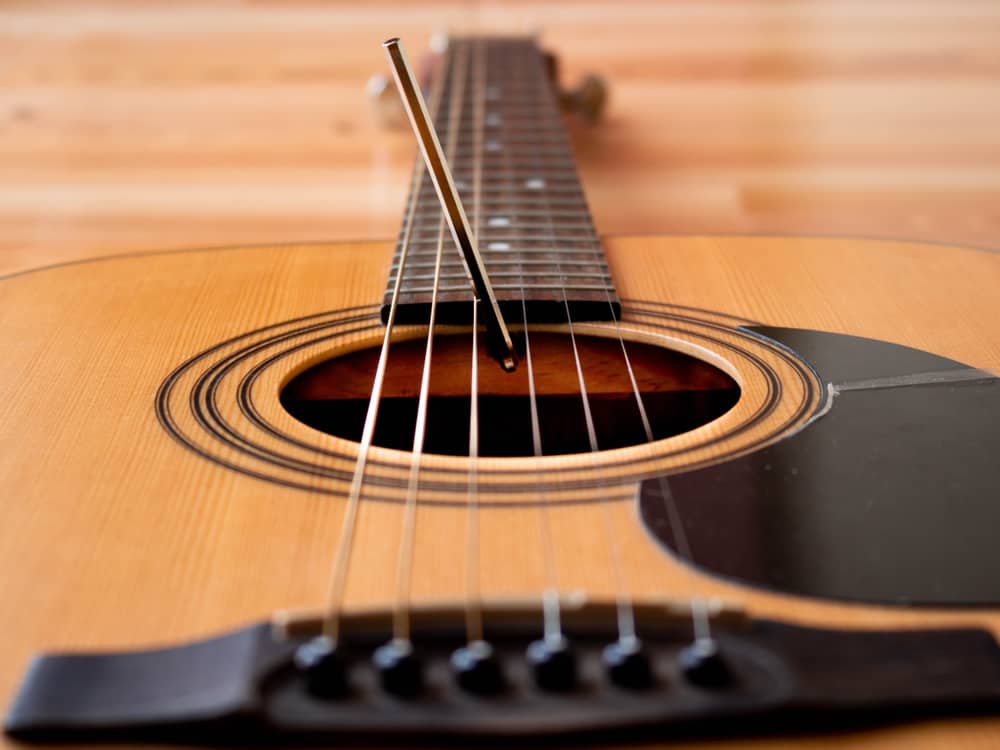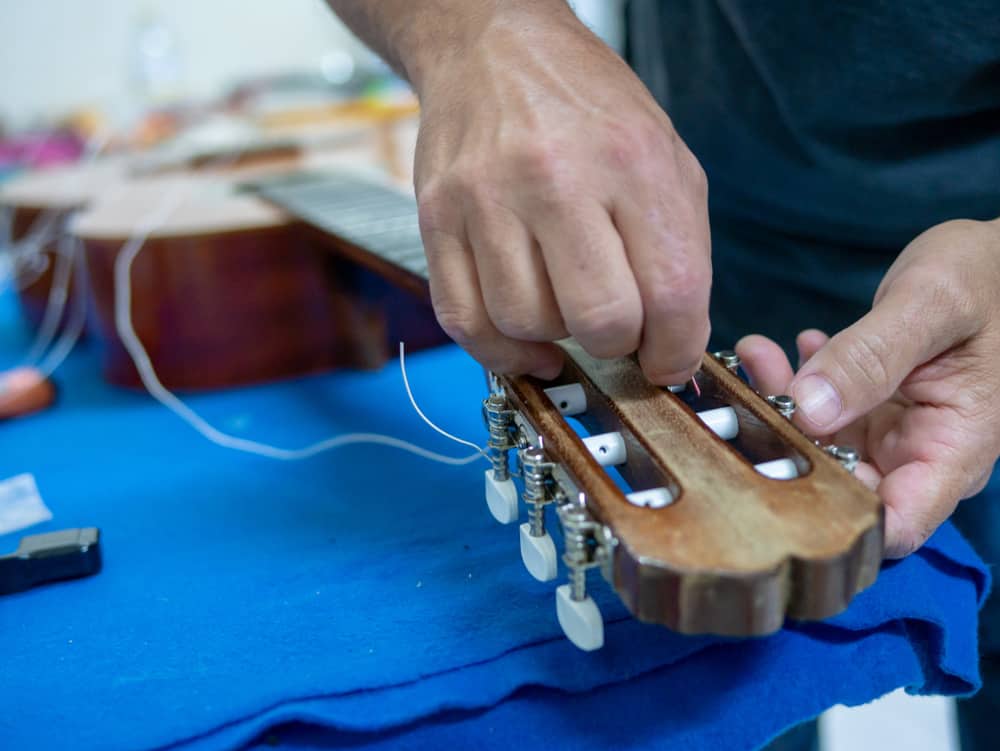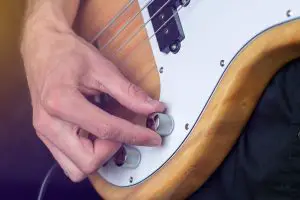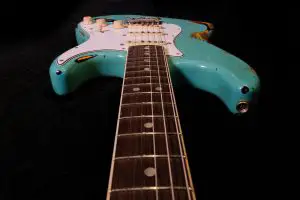
Imagine driving your car daily and never taking it to the mechanic for maintenance. Likewise, If you want your guitar to keep sounding great, you need to maintain it regularly. Guitar setup is general maintenance of the guitar. It can involve multiple services like adjusting the neck, replacing strings, and changing the string height.
How often a guitar should be set up is based on how frequently you play, how often you change the strings, humidity, temperature, and even the brand of your guitar. So how long does a guitar setup take?
Going to a guitar store to get a setup can range from a few days to weeks, depending on how busy the luthier is. It’s way cheaper and faster to do it yourself as it’ll only take some hours.
Let’s look at everything you need to know about guitar setup.
When Does Your Guitar Need a Setup?

If you’ve been playing the guitar for some time, you’ll know that even new guitars can get a setup. For example, you may prefer to use different strings or play with a lower string height. However, a setup is primarily used to correct frustrating issues in older guitars. Below are signs that might show that your guitar needs a setup.
Bowed or Warped Neck
The Guitar neck is bowed when the strings sit higher or lower in the middle than at either end of the fretboard. Bowed strings occur due to changes in temperature or humidity and are easy to fix.
Guitar Is Out of Tune Further up the Fretboard
It’s a different kind of frustration to tune your guitar only for it to sound still not right. A trick to check if your guitar is in tune is to check the notes on the 12th fret with a tuner. Play the notes fretted first, then play the harmonics. They should match.
If they don’t, it’s a sure sign that your guitar needs intonation adjustment. A correctly intonated guitar will have an accurate sound along the entire string length.
You can either fine-tune the truss rod to fix the neck bow or adjust the saddle to change the string length. Sometimes, you have to do both.
Your guitar Won’t Remain in Tune
If, after tuning your guitar, it starts sounding out of pitch almost immediately, then the nut is usually the problem. When the slots in the nut are too tight for your strings, the strings will loosen when you play and sound wonky.
To fix it, you can either use lubricants to make the strings move freely or file the slots wider to contain each string perfectly. If you’re using an electric guitar, the tremolo may be the cause.
Rough and Dry Fretboard
Fretboards made from woods like rosewood and ebony need to be conditioned frequently to ensure they don’t dry out. If they dry out, your guitar will feel rough to play, and it causes the fingerboard to crack or shrink.
If the fretboard is dry, it’s weak, so it’s unable to handle the tension from the strings.
To restore the fretboard, you’ll need to use a conditioning oil. It would be best to store your guitar in areas with low humidity.
Your Guitar Strings Rattle Against the Frets
This is a common issue for guitarists. It’s when your guitar strings buzz against the frets resulting in a horrible sound or no sound at all.
A well set up guitar is supposed to touch only the fret wire in front of the fret you’re pressing on.
Fret buzz happens when your guitar strings are too low (this is called low action in guitar lingo).
Fret buzz is usually corrected the same way as when fixing intonation issues – by adjusting the truss rod or raising the saddle height.
Pressing Down on the Strings Is Difficult
This is the opposite of the fret buzz issue. It happens when your strings are too high, making it almost impossible to fret notes. Although string height is the guitarist’s preference, you shouldn’t overlook the pain if your fingers hurt badly after minutes of practice.
A setup is needed to lower the strings and adjust them to your preferences. To do this, you should lower the saddle height and fix any neck warping.
Takeaway
A basic guitar setup costs $60-$80. As mentioned earlier, the time the setup takes is dependent on your location and other factors. If you want to set up your guitar by yourself, here’s a detailed guide.
Frequently Asked Questions
Taking your guitar in for a setup twice a year will help it sound and feel better. Although you don’t necessarily have to, better safe than sorry, right?
A setup entails correcting your guitar’s intonation, action, saddle height, and truss rod and improving the overall playability of your guitar. So yes, it’s definitely worth it.







